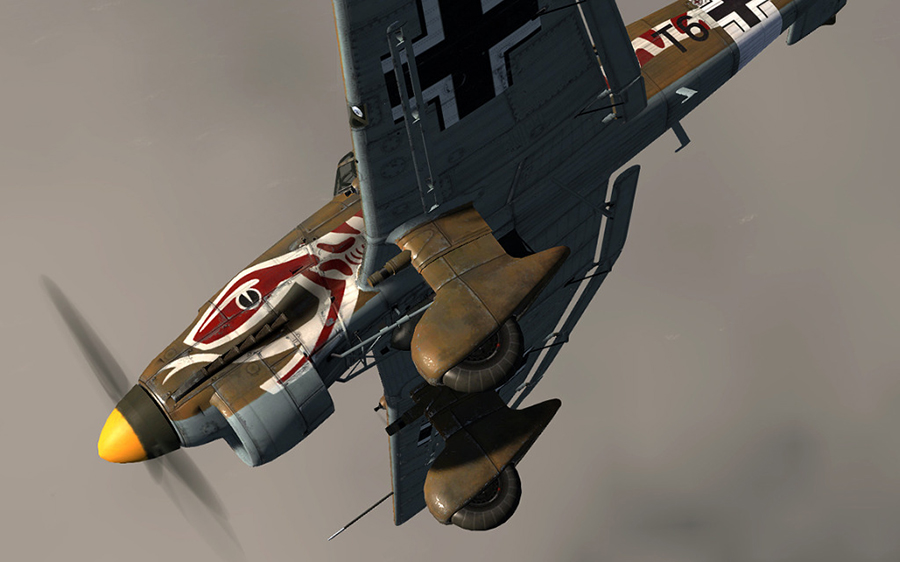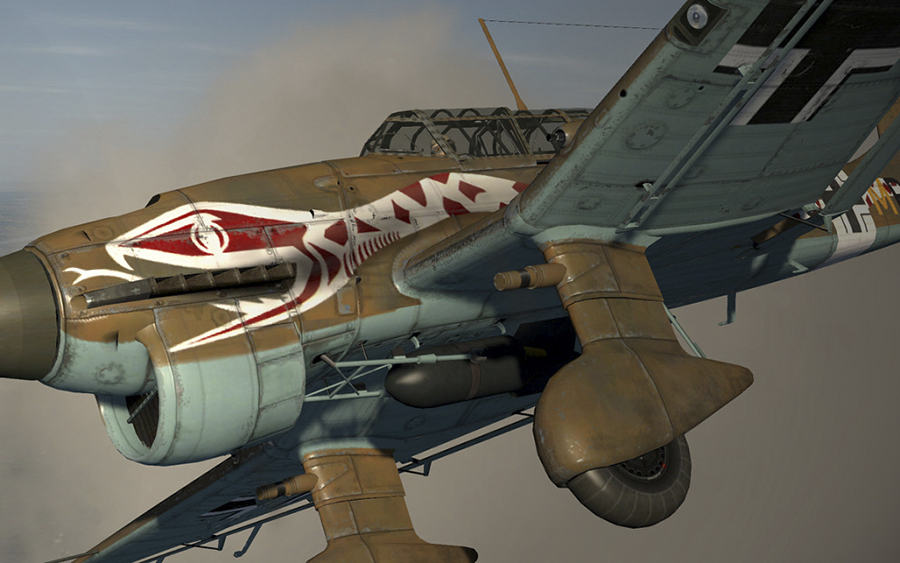
This screenshot is based on illustrations in Weal, and Leonard and Jouineau, who identify the plane as an extended range R-2 of 6./St.G 2, with the identification T6+CP—a supposition that would persist until the publication of Urbanke's article in 2005. The upper surface is RLM 70/71 and the lower, RLM 78. But at the time, this too was conjecture—especially the angled jaw of the snake, which was not visible in the single photograph then available.

One of the first depictions of the "Snake" Stuka was illustrated in 1982 by Rikyu Watanabe, who presented the plane as a B-2/Trop of II./St.G 2 and given the code T6+MP—although the "M," designating the thirteenth plane in the Staffel, seems arbitrary. What is remarkable, of course, is the extraordinary image of the snake that runs the entire length of the plane on the port side. Watanabe had imagined it to be red and white and, while more reminiscent of Richthofen's Flying Circus than standard desert camouflage, identification certainly would have been immediate. What he presented as teeth in the lower jaw seem instead to be the shadow cast by the exhaust stubs.